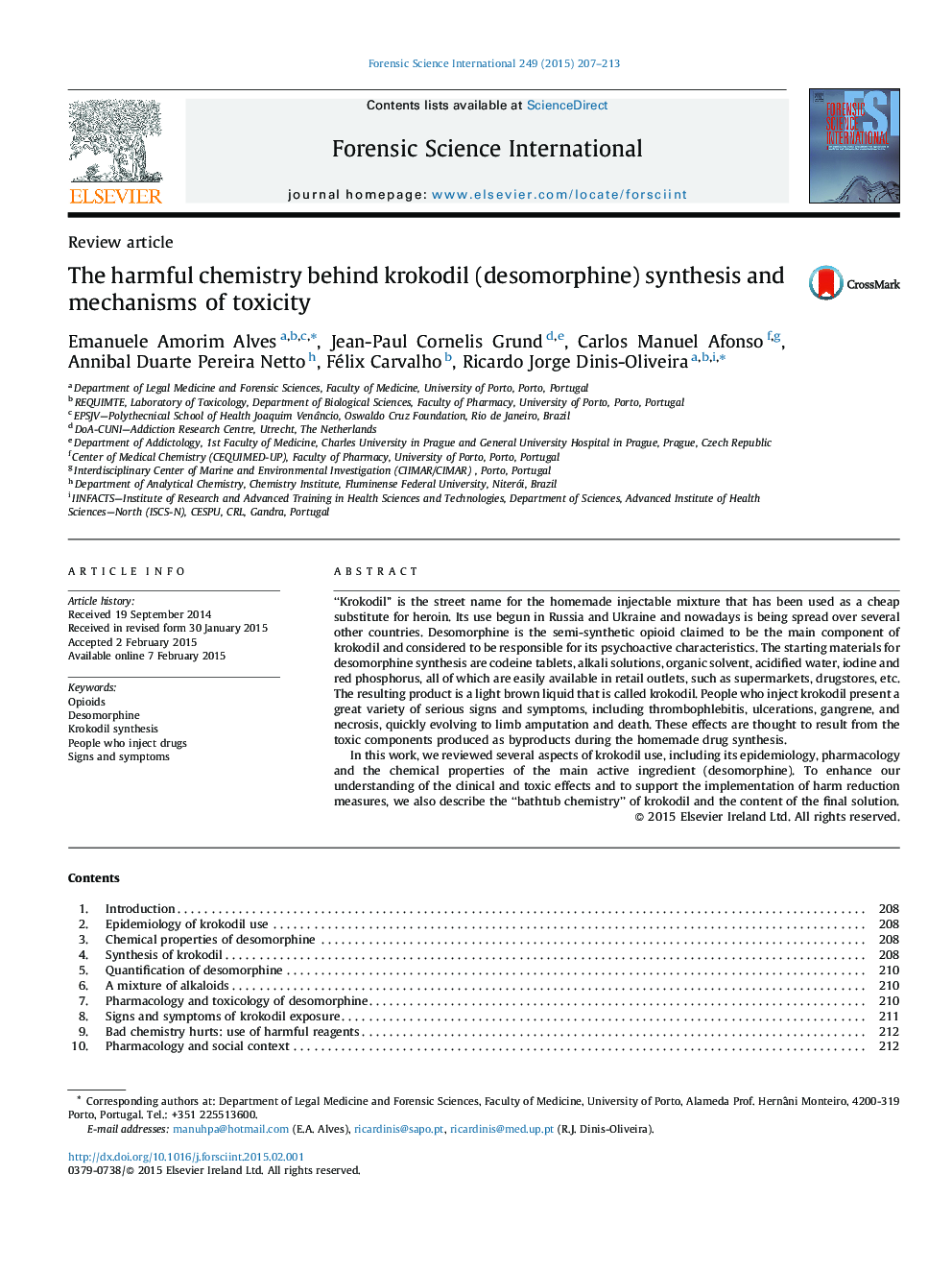| Article ID | Journal | Published Year | Pages | File Type |
|---|---|---|---|---|
| 95425 | Forensic Science International | 2015 | 7 Pages |
•“Krokodil” is the street name for a cheap substitute for heroin.•Desomorphine is the semi-synthetic opioid claimed to be the main active component.•Codeine tablets, alkalis, iodine and red phosphorus are the main raw materials.•Chemical content analysis of krokodil should help to explain toxic-related effects.
“Krokodil” is the street name for the homemade injectable mixture that has been used as a cheap substitute for heroin. Its use begun in Russia and Ukraine and nowadays is being spread over several other countries. Desomorphine is the semi-synthetic opioid claimed to be the main component of krokodil and considered to be responsible for its psychoactive characteristics. The starting materials for desomorphine synthesis are codeine tablets, alkali solutions, organic solvent, acidified water, iodine and red phosphorus, all of which are easily available in retail outlets, such as supermarkets, drugstores, etc. The resulting product is a light brown liquid that is called krokodil. People who inject krokodil present a great variety of serious signs and symptoms, including thrombophlebitis, ulcerations, gangrene, and necrosis, quickly evolving to limb amputation and death. These effects are thought to result from the toxic components produced as byproducts during the homemade drug synthesis.In this work, we reviewed several aspects of krokodil use, including its epidemiology, pharmacology and the chemical properties of the main active ingredient (desomorphine). To enhance our understanding of the clinical and toxic effects and to support the implementation of harm reduction measures, we also describe the “bathtub chemistry” of krokodil and the content of the final solution.
